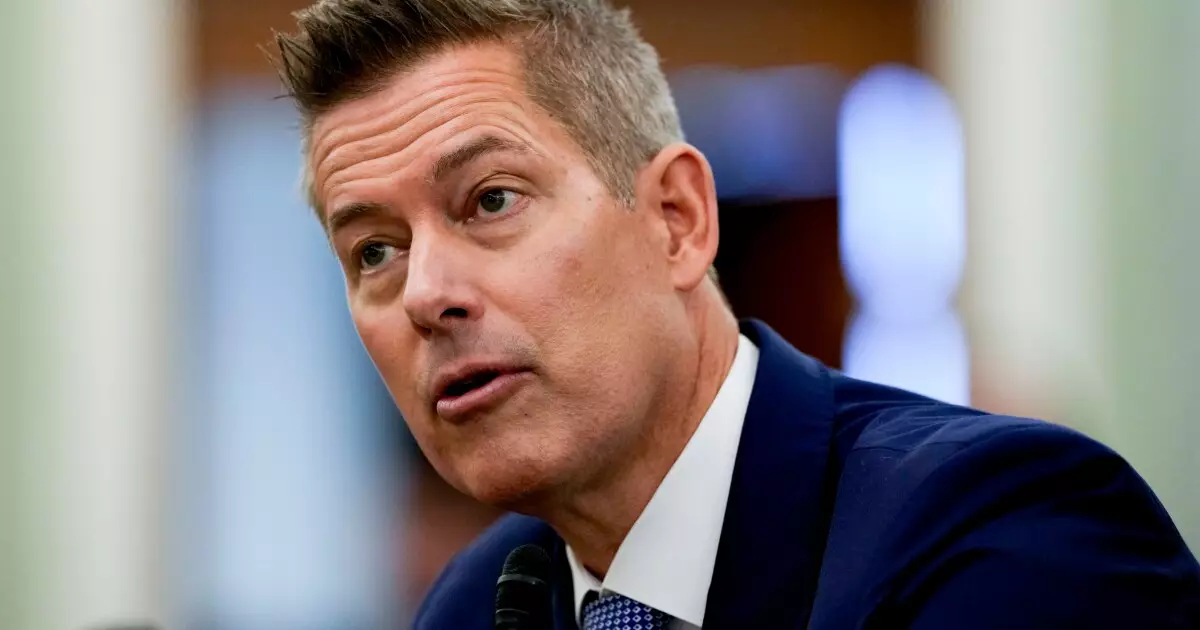The landscape of federal transportation funding in the United States is undergoing significant transformation under the Trump administration’s recent directives from the Department of Transportation (DOT). As the administration seeks to align federal spending with its political agenda, Secretary Sean Duffy has implemented a series of orders that tie funding to specific socio-demographic metrics and compliance with federal immigration laws. This unique approach raises questions about the implications for states, local governments, and the future of transportation projects across the nation.
In a notable reshaping of priorities, the DOT’s directive emphasizes funding preferences for projects situated in areas that exhibit high birth and marriage rates. This metric serves as a rationale for allocating resources toward communities that the administration deems aligned with family and traditional values. Simultaneously, the memo indicates a focus on projects that exist within federally designated opportunity zones, thereby attempting to promote economic growth in underserved areas. By linking transportation funding to such demographic characteristics, the administration is steering public resources toward projects that resonate with its foundational ideologies, while also reinforcing certain socio-political narratives.
Duffy’s memo, notably released soon after he assumed office, seeks to modify the existing principles and standards that have historically guided DOT policies. It draws a comparison to a previously controversial directive from the Biden administration, which aimed to reduce highway expansion in favor of projects that promote environmental sustainability and public transit options. By positioning its directive as an “update” to previous policies, the Trump administration aims to portray itself as reversing what it views as detrimental partisan initiatives.
A crucial aspect of the current directive is its mandate for rigorous economic analysis and cost-benefit calculations. The memo outlines that all DOT grants, loans, and contracts will be contingent on their potential to bolster the American economy and serve the American populace. The administration’s strategy appears to prioritize user-fee models, potentially leading to a shift in the funding landscape favoring projects that generate revenue, such as toll roads or fee-based transit systems.
This inclination toward economically beneficial projects also raises concerns regarding equitable access to transportation resources. Projects that rely on user-fee arrangements may inadvertently marginalize low-income communities that cannot afford such fees, thereby exacerbating existing inequalities in transportation accessibility. The push for economic viability must be balanced with considerations of social equity and inclusion, ensuring that all communities can benefit from federal investments in transportation infrastructure.
In an effort to enforce the new order, Secretary Duffy has instructed department officials to scrutinize existing grant and loan agreements, calling for unilateral amendments to ensure compliance with the updated directives. This approach, while positioned as a necessary administrative action, could lead to tensions between state and federal transportation agencies. Stakeholders like Joung Lee, director of policy and government relations for the American Association of State Highway and Transportation Officials (AASHTO), have underscored the importance of maintaining collaborative relationships as new policies unfold.
Moreover, the memo principally targets discretionary funding programs rather than the formula-based funding that adheres to long-standing statutory requirements. This distinction is critical as it delineates which projects may be affected by the new priorities, potentially leading to funding disparities that could disproportionately impact less politically connected regions.
In his discussions with AASHTO, Duffy emphasized the need to re-evaluate the federal-state relationship in transportation projects. He articulated a vision where states are granted greater autonomy and flexibility, proposing that a collaborative dialogue could foster better outcomes for infrastructure development. This reframing of the federal-state partnership suggests a shift away from a top-down approach to one that empowers local entities with decision-making authority.
While increasing state autonomy could lead to more targeted and efficient use of federal funds, it also raises concerns about the potential fragmentation of transportation planning and investment. A lack of cohesive national standards might result in inconsistencies in infrastructure quality and access across state lines, affecting overall transportation efficacy and safety.
As the Trump administration initiates sweeping changes in the DOT’s funding mechanisms, the implications of these policies will be far-reaching. By aligning federal transportation priorities with specific socio-demographic indicators and emphasizing economic viability, the administration seeks to redefine how public funds are allocated across the nation. However, this approach must navigate the complex terrain of equity in transportation access, funding disparities among states, and the overarching need for collaboration between federal and state agencies. The journey ahead promises to be transformative, yet it carries inherent challenges that stakeholders will need to address collaboratively to ensure an equitable future for U.S. transportation infrastructure.


Leave a Reply